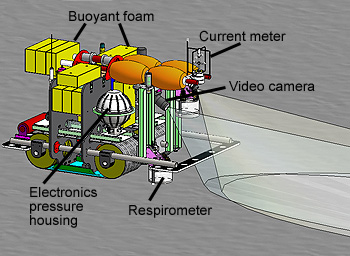
Send that data right over. The absolute coolest gadget to hit deep-sea science is is the Benthic Rover, the deep-sea equivalent of the Spirit and Opportunity. The Benthic Rover, the brain child of deep-sea biologist Ken Smith, and brought to life by engineers at the Monterey Bay Aquarium Research Institute, is approximately of small compact car. The rover slowly creeps (3 feet per minute to minimize kicking up sediment) across the seafloor taking photographs of the animals and sediment in its path. Every three to five meters it stops and makes a series of measurements on the community respiration (i.e. oxygen consumption) of organisms living in the seafloor sediment. The rover is also totally tricked out with an optical sensor that can scan the seafloor to measure how much food has arrived recently from the surface water. Why? To try to understand of how deep-sea organisms acquire enough food to survive…a favorite question of mine as well. In the words of the press release
Most life in the deep sea feeds on particles of organic debris, known as marine snow, which drift slowly down from the sunlit surface layers of the ocean. But even after decades of research, marine biologists have not been able to figure out how the small amount of nutrition in marine snow can support the large numbers of organisms that live on and in seafloor sediment.
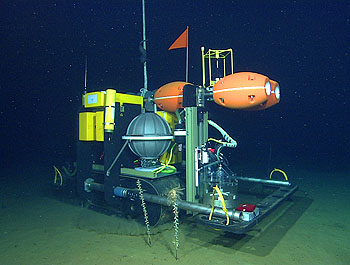
A series of foam packs make the 3,000 pound vehicle semi-bouyant at just 100 lbs in seawater, to prevent the rover from sinking in the soft oozy mud that dominates the abyssal plains. Tank-like treads keep the vehicle moving across the sediment and custom-made titanium pressure spheres house the computer and electronic needed to drive the vehicle. Best yet the bad boy is programmable. Here’s your mission, come back to me when you have some data!
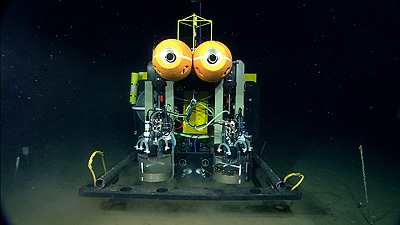
However, during this summer the Benthic rover was tethered to newly created Monterey Accelerated Research System (MARS), an underwater observatory that provide power and data link to the vehicle. “Hooking up the Rover to the observatory opened up a whole new world of interactivity. Usually when we deploy the Rover, we have little or no communication with the vehicle. We drop it overboard, cross our fingers, and hope that it works.” In this case, however, the observatory connection allowed MBARI researchers to fine tune the Rover’s performance and view its data, videos, and still images in real time. Sherman recalls, “One weekend I was at home, with my laptop on the kitchen table, controlling the vehicle and watching the live video from 900 meters below the surface of Monterey Bay. It was amazing!”
An now for the rover in action!



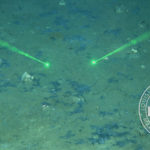

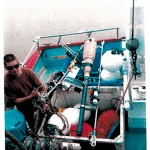
Welcome back, Craig. I love this!
What’s the battery life on that puppy, ya reckon?
MARS represent! That’s where my instrument is plugged in.
That’s what she sa… um… nevermind
What I meant was, your mother. It’s plugged into your mother.
Say, what is the thing drifting down the left-hand side of the video? Some sort of logo? debris? a jellyfish? I can’t tell. :D
Looks like a jellyfish.
another benthic rover from Germany
http://www.jacobs-university.de/events/wally_selected_landmark